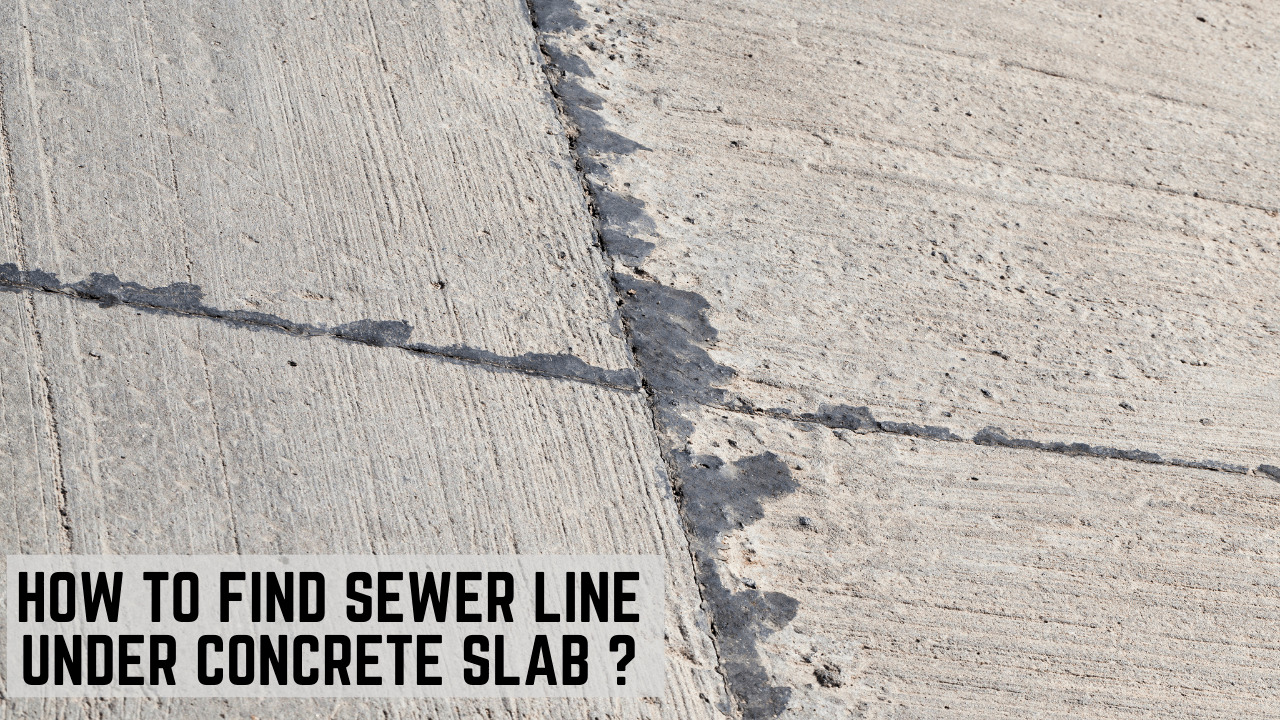Remodeling a kitchen or bath in a house constructed on concrete slabs presents its own set of obstacles, not the least of which is connecting the new drain system to the home’s sewer line. The timetable will be maintained, and expenditures will be kept low by cutting into the slab precisely.
However, how can you locate a sewer line beneath a concrete slab? If you live in a home with a concrete slab foundation, you may wonder how deep the plumbing is beneath the slab, especially if you need to reach it to clear a clog or replace the plumbing due to a slab leak. We’ll answer your questions so you can figure out what to do next.
Continue reading to know more about sewer lines under concrete slabs:
Table of Contents
Residential Sewer Line System Under A Slab
From the roof of your house to the sewer line underneath, the drainage system slopes downward. Your sinks and tubs are connected to a vertical main line through your house via pipes. Gravity transports waste from the drain to the sewer line once buried.
Traps are located at most of the different fixtures throughout your home to prevent items from becoming stuck. The state of the land’s infrastructure will influence how far your pipes can run. Most people continue with their current configuration as long as it complies with all local construction roles to avoid extra costs.
Concrete Slab Is A Strongest Foundation
Slab foundations are one of the most durable and cost-effective foundation solutions. The concrete can withstand much abuse, sustain much weight, and termites won’t eat it. Because freezing can cause cracks, slab foundations are best used in areas that do not freeze.
Pipes are buried beneath the concrete, making access impossible. A slab leak is a leak from the plumbing beneath the slab of your home. If left unchecked, this leak can cause much damage, especially if it affects the foundation.
How To Identify A Sewer Line Leakage Under Concrete Slab?
If you determine a slab leak because of a sewer line, you should investigate more before the problem worsens. Your water meter can be used to detect a leak. Turn off the water and observe the meter to see if it remains stationary or moves.
You have a leakage in the pipe if it dips after turning off the water for a few hours. You can also look for a leak with an endoscope, although you cannot identify a minor hole or defect with an endoscope.
You’d have to pay the most if you left the problem unnoticed that it necessitates extensive slab repairs. Look for a problem and address it early to prevent the significant repair costs connected with fixing your home’s foundation.
What Are The Main Reason For Leakage Under Concrete Slab?
Well, several reasons and factors lead to concrete slab leakage. You have to identify the right cause and solve it accordingly to avoid the problem shortly. So, let’s talk about a few main leakage reasons in detail:
Rust Over The Metal Pipes
Corrosion is the natural process of metal rusting overtime when it is exposed to water regularly. When metal comes into touch with hot, high-pressure water, it corrodes faster. Corrosion not only corrodes metal materials and causes leaks, but it can also cause rust in your drinking water.
The chances of getting rusted are higher than normal in copper and cast-iron pipes.
Low-Quality Pipes
Plastic pipes do not corrode, but they also do not last nearly as long as metal pipes. You want to utilize sturdy, long-lasting materials when installing plumbing deep beneath your home.
Otherwise, the pipes would weaken, and a leak may occur. The plumbing and sewer lines beneath your slab foundation might be severely damaged if the ground shifts.
How To Prevent Sewer Line From Getting Damaged Under Concrete Slabs?
It’s critical to have your sewer lines built correctly from the start. If you’re in charge of a new installation, choose high-end materials and hire reputed plumbers who have experience with plumbing beneath slab foundations.
1) Don’t Use Chemical-Based Drain Cleaners
When you have a persistent clog, especially if it’s deep in your drain, chemical drain cleaners can be incredibly helpful. On the other hand, the chemicals can corrode your pipes by eating away at them and creating ideal conditions for corrosion.
An enzymatic drain cleaner or an electric auger can be used instead of chemical drain cleaners. On the other hand, a drain snake can only go so far into your plumbing system.
2) Use Water Softener
A water softener removes minerals from the water before entering your home, preventing sediment accumulation in your plumbing. The water softener should ideally be positioned at the main water supply. You can, however, install a water softener on various fixtures throughout your house.
3) Check For The Appropriate Heater Temperature
To avoid scorching, experts recommend setting your water heater no higher-than-average temperature. On the other hand, this temperature prevents your water from becoming too hot and causing harm to your pipes. It’s also a good idea to keep an eye on the water pressure.
Conclusion
Above all, you can use a professionally-designed device or an endoscope to find the sewer line under a concrete slab. You can also start finding the sewer line under the slab by running a fish throughout the line.
You have to set up the receiver’s frequency according to the pipe horn transmitter. In this way, you can find the pipeline in any direction under the concrete slab.





